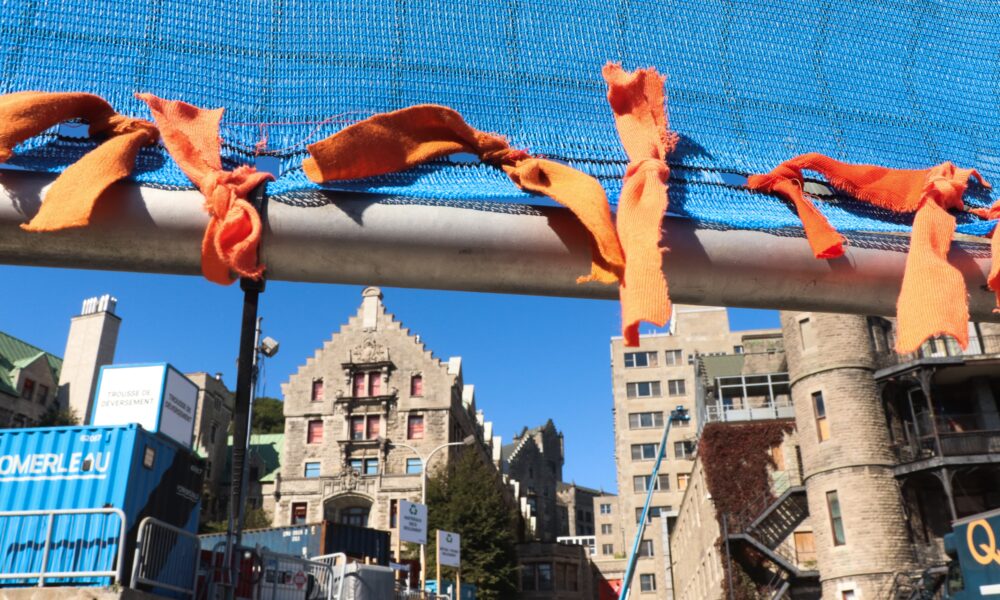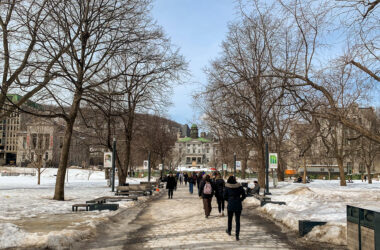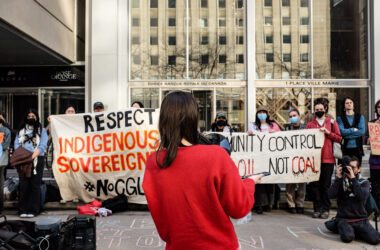Content warning: Mentions of residential schools, settler colonialism, violence, and death.
On Oct. 29, Independent Special Interlocutor for Missing Children and Unmarked Graves and Burial Sites associated with Indian Residential Schools, Kimberly Murray, released her final report on missing and disappeared Indigenous children. Murray—who was appointed to the position by the Minister of Justice and Attorney General of Canada in June 2022—worked with Indigenous residential school survivors, their families, and their communities to outline the actions needed to create a legal framework to protect the rights of and ensure justice for children buried at the sites of former residential schools. Murray’s findings also supported the demands of the Kanien’kehá:ka Kahnistensera (Mohawk Mothers’) for an investigation into the New Vic Project site, for which they filed a motion at the Supreme Court on Oct. 15.
Murray asserts that through actions such as subjecting them to violence, malnutrition, and medical experimentation, the state committed “enforced disappearances” of many Indigenous children sent to residential schools—a crime and violation of human rights under international law. Murray’s report also outlines 42 “legal, moral, and ethical obligations that governments, churches, and other institutions have to support Indigenous-led search and recovery work.” Among these obligations are calls for institutions to issue “full reparations” to families of missing and disappeared children and to protect burial sites from being disturbed by establishing an “Indigenous Burial Site” designation.
Murray also determined that investigations should take place not only at sites of former residential schools, but at other locations such as hospitals, sanitoria, and mental health institutions where children were forcibly transferred, and later died. One of the obligations in the report demands that Action 73 of the Truth and Reconciliation Report—which calls on the government to create an “online registry of residential school cemeteries, including, where possible, plot maps showing the location of deceased residential school children”—be expanded to including these other institutions as well.
“[The Canadian government is] refusing to support searches of these other institutions, of the archival records of these institutions, so that people can find where their loved one is,” Murray said. “They’re absolutely refusing to repatriate remains if the person did not die at the Indian residential school, and they died in the hospital.”
Many of Murray’s findings aligned with the legal battles of Mohawk Mothers, who filed a motion with the Supreme Court demanding an independent investigation into potential unmarked graves on the grounds of McGill’s New Vic Project at the former Royal Victoria Hospital (RVH). Murray expressed her solidarity with the group at an Oct. 15 press conference in Ottawa, when the Mothers’ chose to bring their case to the Supreme Court.
Located at the RVH, the Allan Memorial Institute was among the locations where the CIA conducted mind control and chemical interrogation experiments as part of the MK-ULTRA project in the 1950s and 1960s. The Mothers believe that there are ancestral burials, which pre-date colonization, and unmarked graves from the experiments on the site.
In an interview with The Tribune, Murray asserted that Canada’s legal framework fails the survivors of residential schools, and their families and communities, by creating barriers to accessing archives and information relating to residential schools that could lead to truths about the disappearances of Indigenous children.
“When it comes to the archives, the privacy law, the access to information law […] they were never created for a truth-finding process,” Murray said. “We know under international law that victims of atrocities have the right to know the truth. Our current legislation in Canada is not about finding the truth, it’s about hiding the truth.”
The Mothers came to a settlement agreement with McGill—as well as Société québécoise des infrastructures (SQI), RVH, the City of Montreal, and the Attorney General of Canada—in April 2023, which mandated that archival and testimonial investigations into possible unmarked graves and archeological work at the site begin. This work was overseen by an archeological panel appointed by McGill, the Kahnistensera, and SQI. The panel disbanded in August 2023, which the Mohawk Mothers claim violated the terms of the settlement agreement.
The McGill Media Relations Office (MRO) stated in a written statement to The Tribune that the panel disbanded because it had fulfilled its mandate.
“It’s important to note the mandate letter to the panel members stipulated an end date of [July 17, 2023] for their service contracts. As the Panel had carried out its mandate by that date, it dissolved, as it was intended to,” the MRO wrote. “The settlement agreement nonetheless indicates that McGill, SQI, and Kahnistensera will seek the advice of the panel as to how to move forward if there is some unexpected discovery.”
The Mothers took the parties to court again in November 2023, where Justice Gregory Moore ruled to reinstate the panel. In August 2024, Quebec’s Court of Appeal granted McGill’s appeal of Moore’s decision, at which point the Mothers brought the case to the Supreme Court. As of Nov. 4, the Supreme Court has not publicly stated whether it will take on the case.
McGill maintains that it has abided by the settlement agreement and that no unmarked graves have been found on the site. The MRO also highlighted that although the panel is disbanded, “[t]he investigation into possible unmarked graves is ongoing” and that the excavation continues to follow the panel’s recommendations.
In an email to The Tribune, Kwetiio, one of the Mohawk Mothers, noted that many of Murray’s arguments on the legal system’s failings resonated with the group’s ongoing battles in the courtroom. Kwetiio emphasized that Indigenous legal traditions were in place before colonization, and urged courts to “accept that our traditional laws govern the land.”
“The court system is not our way. The Kaianerehkowa (Great Peace) outlines a consensus decision-making system where all parties try to overcome their disagreements to come to an understanding,” Kwetiio wrote. “But our attempts to discuss with McGill and SQI out of court were consistently denied, and we have no choice [but] to go to the court.”
Associate Professor in the Faculty of Law at McGill, Kirsten Anker, studies Indigenous jurisprudence and is among the instructors who teach LAWG 103: Indigenous Legal Traditions. Anker noted that LAWG 103 takes a “bottom-up” approach to studying Indigenous law, as the differences between Indigenous laws and Western laws stem from different epistemologies or knowledge systems.
“[The] understanding of a human […] as someone who is interdependent with all these other elements of the world, of the ecosystem and the planetary system, […] that’s a very different understanding to the individual model in the Enlightenment tradition that has formed the foundation of [the] Western legal system, and the idea of individual responsibility and the kind of moral tones of criminality and punishment as some kind of behavioural modification,” Anker said.
For Kwetiio, the lack of legal protection for burial sites and unmarked graves means the burden falls primarily upon Indigenous people to advocate for missing and disappeared Indigenous children.
“The burden should not be ours to protect evidence from the mass atrocities that we endured, but on settler institutions and governments,” Kwetiio wrote. “Because of the lack of any legal framework protecting these sites of atrocities and medical experimentation, we had to dedicate so much of our time and resources and face a slew of attorneys using legal tricks and technicalities to bury us under paperwork, […] [and appeal] court decisions in our favour, which continuously adds to the trauma we experienced.”
Reflecting on the possibility of having reconciliation within the legal system, Murray noted that some law schools and law federations are seeking to “revitalize” Indigenous law and teach it to lawyers. For example, she noted Justice Moore’s referencing of Haudenosaunee law in his November 2023 decision reinstating the panel in the Mohawk Mothers’ case. However, Murray emphasized that there are still challenges with applying these laws in court and that more must be done to see these changes.
“We’re seeing some movement and understanding, but […] we need the Crown and the defence council to start lawyering for reconciliation instead of trying to protect the rights of their clients in such offensive ways that they do,” Murray said. “I think we can go a lot further, if people would sit down and collaborate with each other.”









